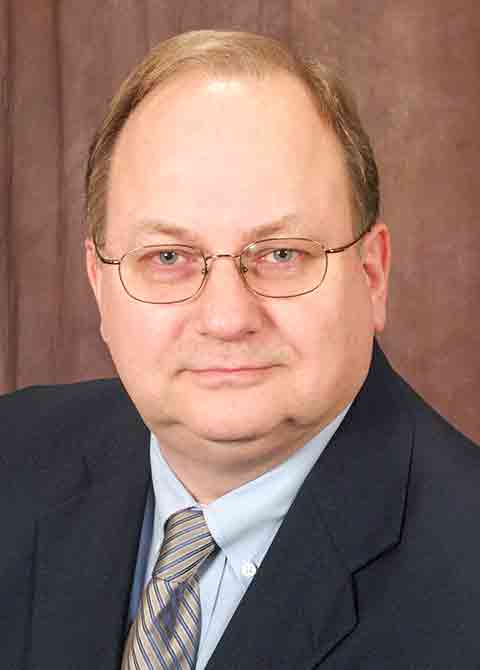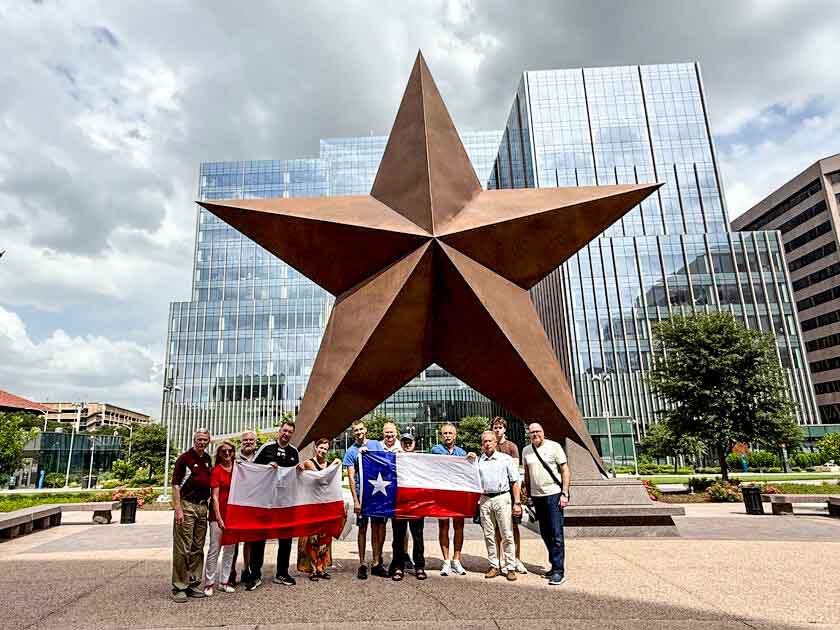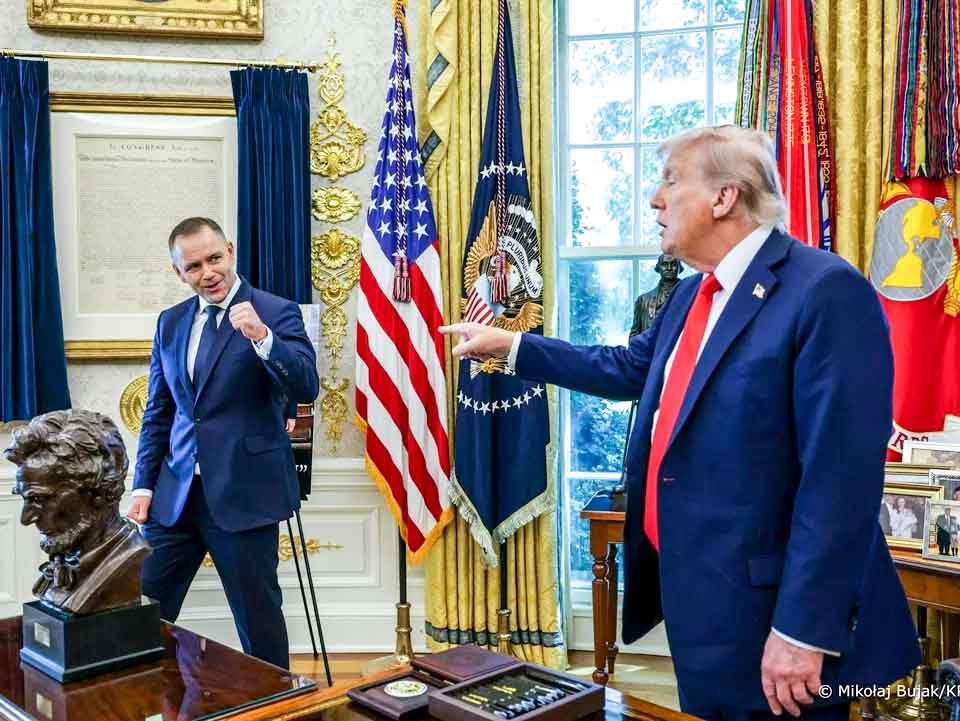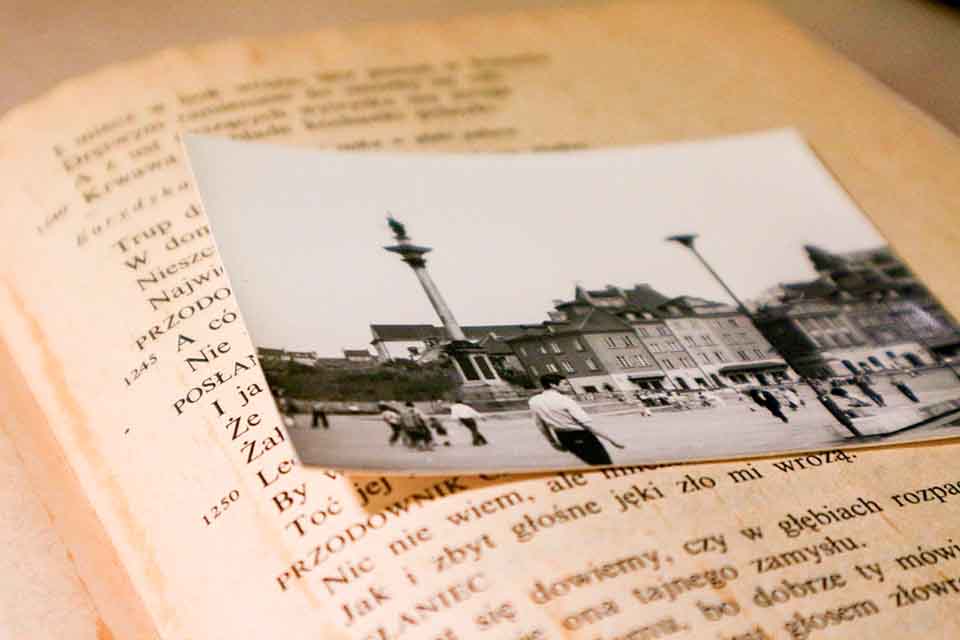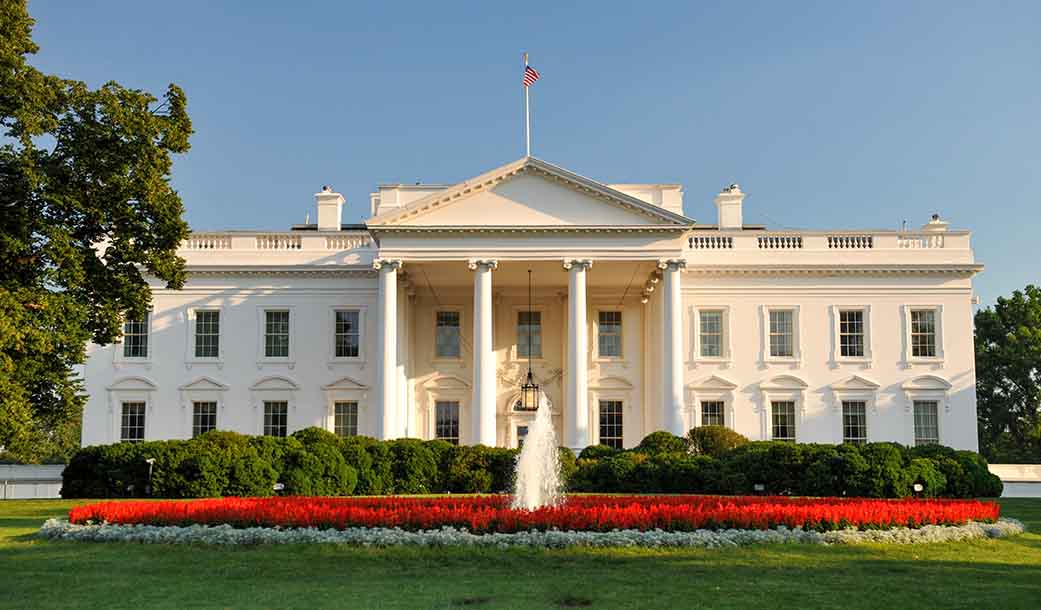Part 1 of a series of articles on the relationship between the Polish state and its diaspora in the years 1918-1990.
Today, approximately 20 million people of Polish descent live outside of Poland, including 10-12 million in the U.S. These are people who emigrated or were born outside of Poland but declare a strong attachment to their Polish heritage and ties to Polishness.
The Polish diaspora is the fifth largest group in OECD countries. Over a quarter of Polish emigrants (28.8%) are people with higher education.
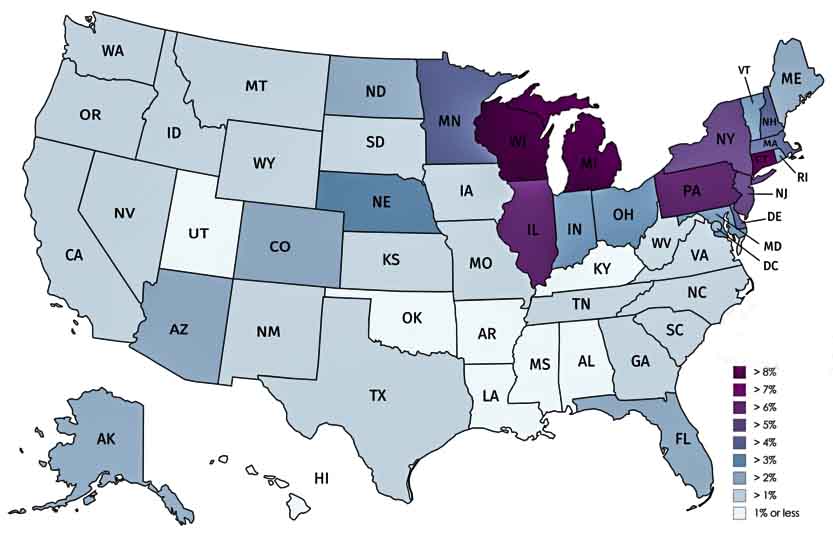
Percentage of Polish Americans in each state's population, 2018 (Source: Wikipedia)
Today, when a real chance arises to restore the Polish diaspora to its rightful place, this opportunity cannot be wasted. It's time to break free from the burden of Magdalenka contracts and open Poland to people free from communist connections, full of energy, competence, and loyalty to their homeland.
The Finance and Potential
In the first quarter of 2025, the Polish diaspora remitted approximately PLN 2.86 billion (USD 0.8 billion) to Poland. By comparison, in all of 2023, the total amount of remittances was approximately USD 6.43 billion, almost half the record level in 2008 (USD 12.32 billion).
The Polish & Slavic Federal Credit Union, with 22 branches in the U.S., had $2.45 billion in deposits and 124,708 members at the end of June 2025—an average of over $19,600 per person. It's hard to overestimate the financial potential of approximately 10 million American Poles.
Americans of Polish descent are wealthier than the average American ($79,000 family income compared to $63,000) and better educated (36% have a college degree compared to 28% of the general population). The majority (71%) declare affiliation with the Roman Catholic Church (Piast Institute, 2013).
There are many business communities around the world that still have no idea what the open road to investing in Poland looks like.
Education and the Intellectual Influence
There are over several thousand Polish scientists living around the world, working at hundreds of universities worldwide. This group has enormous intellectual potential and should become a driving force for Poland's development. Polish universities, research and development centers, and state institutions should actively seek collaboration with this elite, much as the Second Polish Republic did.
There are other communities of Polish professionals around the world who possess the highest levels of expertise in economic, military, cultural, and social development. Since 1989, these individuals have been knocking on Poland's door to no avail, and the only response has been deafening silence.
The Polish diaspora is not a relic of history; it is a strategic partner that should support Poland. This requires political will, which has been lacking in Warsaw since 1989.
Historical background - Polish aid for Poland after World War I
The Polish American community and other groups within the Polish diaspora played a key role in Poland's rebirth. Their efforts were three-faceted: military, political, and financial.
The Blood Tribute
Haller's Army – the so-called Blue Army – was formed thanks to thousands of volunteers. It was joined by Poles from the French Army, prisoners of war from German and Austrian formations, and, above all, emigrants from America. Approximately 22,000 volunteers arrived from the United States, over 200 from Canada, and over 300 from Brazil. Recruitment was handled by the Polish Gymnastics Society "Sokół," which had been educating young people in the spirit of patriotism and fitness for years. This was a contribution from the Polish diaspora unmatched by any other diaspora – a unique act of solidarity and sacrifice in the world.
Political Support
Diplomatic efforts were equally important. While operating in America, Paderewski established direct contact with the US government through the Polish diaspora. As early as 1915, he established contact and collaboration with Colonel Edward House, an advisor to President Woodrow Wilson, and then, in 1916, with the President himself. Thanks to his efforts, in 1917, the Poles were granted the right to establish their own army, and Canada provided the grounds for a training camp in Niagara-on-the-Lake, named after Tadeusz Kościuszko.
Financial Assistance
The Polish diaspora also provided material support to their recovering homeland. In 1919, a major humanitarian effort was established – Herbert Hoover's American Relief Administration – supported by Polish diaspora committees, including the Polish-American Children's Aid Committee.
In total, approximately $250 million was donated to Poland, an astronomical sum in pre-Depression times. Poles living in America were responsible for distributing these gifts. They initiated the Polish White Cross and the Polish Grey Samaritans of the YWCA ( Young Women's Christian Association), which recruited nurses to support Polish soldiers and families. These efforts were crucial to Poland's postwar reconstruction. Sadly, their stories have been forgotten.
Additionally, numerous collections were held, documented by, among others, Dr. Aleksander Rytel, co-founder of the Association of Polish Physicians in Chicago.
Three pillars of aid – blood, politics, and money – ensured that the Polish American community has a permanent place in the history of Poland's rebirth. It is an example of how the power of the diaspora can change the course of history not only of a nation but of all of Europe.
Paderewski Memorials and the Polish Cause at the White House
In early 1917, Ignacy Jan Paderewski played a key role in bringing the Polish cause to the international stage. At the request of President Woodrow Wilson, conveyed through his advisor, Colonel Edward House, he prepared the first Memorial on Poland (based on memorials prepared by Polish diaspora organizations). The document, dated January 11, 1917, contained a concise outline of the nation's history, a geographical description of the Polish lands, and an analysis of the political situation under the three partitions. Paderewski clearly called for the reconstruction of Poland within its pre-partition borders, with full access to the sea.
A few days later, the musician and politician presented another study—this time emphasizing the need to grant East Prussia and Gdańsk to the future Poland. These memoranda made a profound impression on Wilson and were quickly reflected in American policy. On January 22, 1917, the US president, speaking in the Senate, officially declared his support for the creation of a "united, independent, and autonomous Poland."
The culmination came a year later – on January 8, 1918 – when Wilson announced his famous peace plan. Point 13 unequivocally stipulated the need to create a "united and independent Poland with access to the sea." As General Józef Haller later wrote, in those days America was "truly friendly to Poland." This was a turning point, as America's stance gave the Polish cause international standing.
The "Blue Army Syndrome"
The "Blue Army Syndrome" is a phenomenon present in Polish politics since 1919. The term itself was first publicly used by Professor Marek Rudnicki after his Senate campaign in 2019. It describes the reluctant, and often downright dismissive, attitude of the Polish authorities towards initiatives undertaken by the Polish American community, exploiting it and leaving it with nothing.
It's worth recalling that over 22,000 American volunteers joined the ranks of General Józef Haller's approximately 70,000-strong "Blue Army." For its time, it was a modern, well-equipped, and highly trained Polish Army formation. It had 120 tanks, 98 aircraft, engineer units, cavalry, artillery, communications units, seven field hospitals, and a cadre of instructors. It also boasted high morale. Haller's men brought back to Poland not only ammunition but also 10,000 horses.
The subsequent fate of the "Blue Army," however, was marked by the political maneuvering of Józef Piłsudski, who sought to limit its significance and influence. In June 1919, General Haller was relieved of his command, which sparked bitterness and a sense of betrayal among the soldiers. The command cadre was gradually replaced with officers drawn from the Legions and loyal to the Marshal. The final blow came with the order of September 1, 1919, to completely disband the army. Its units were incorporated into other military units, and the volunteers from the United States were demobilized.
This decision sparked intense outrage among the Polish American community. From March 1920 to March 1921, approximately 12,000 Hallerczyks returned to New York by ship. The conditions they faced were dire – many were held in transit camps, suffering from hunger and disease, including the onset of typhus. Only then did the ship's doctors provide care. The case received widespread attention in the United States, where Congressmen Julius Kahn of California and Kleczka of Milwaukee, Wisconsin, intervened.
The Fiasco of Światpol
The problem of treating the Polish diaspora with contempt and attempting to "teach it patriotism" dates back to the Sanation era. During the Second World Congress of Poles Abroad, held in Warsaw on August 5, 1934, as many as 40 delegates and some Polish diaspora organizations from the USA refused to join Światpol – an organization intended to unite the Polish diaspora and implement the government's foreign policy. The Congress's goal was to establish a unified structure subordinate to the authorities in Warsaw.
Why did the Polish American community say "no"?
The reason was obvious: no American organization could formally affiliate with the institution established by the government established in the wake of the May Coup of 1926. This fact was ignored in Światpol's enthusiastic narrative. This negated the earlier achievements of the Second Polish Republic, when state policy favored emigration and contacts with the Polish diaspora.
After the Sanation government took power, the situation deteriorated significantly. As Professor Wojciech Skóra of the Pomeranian University in Słupsk notes, care for the Polish diaspora and Polish citizens in the US weakened. In 1922, there were six Polish consular offices in the US; by the 1930s, only three remained (Chicago, Pittsburgh, New York) and the embassy in Washington.
Meanwhile, in 1935, the United States was Poland's third-largest trading partner after Great Britain and Germany. For a country with 126 million citizens—including nearly 4 million Poles—this scale of diplomatic presence was clearly insufficient. For comparison, Poland maintained the same number of consulates in Italy at the time.
We will publish the continuation soon.



